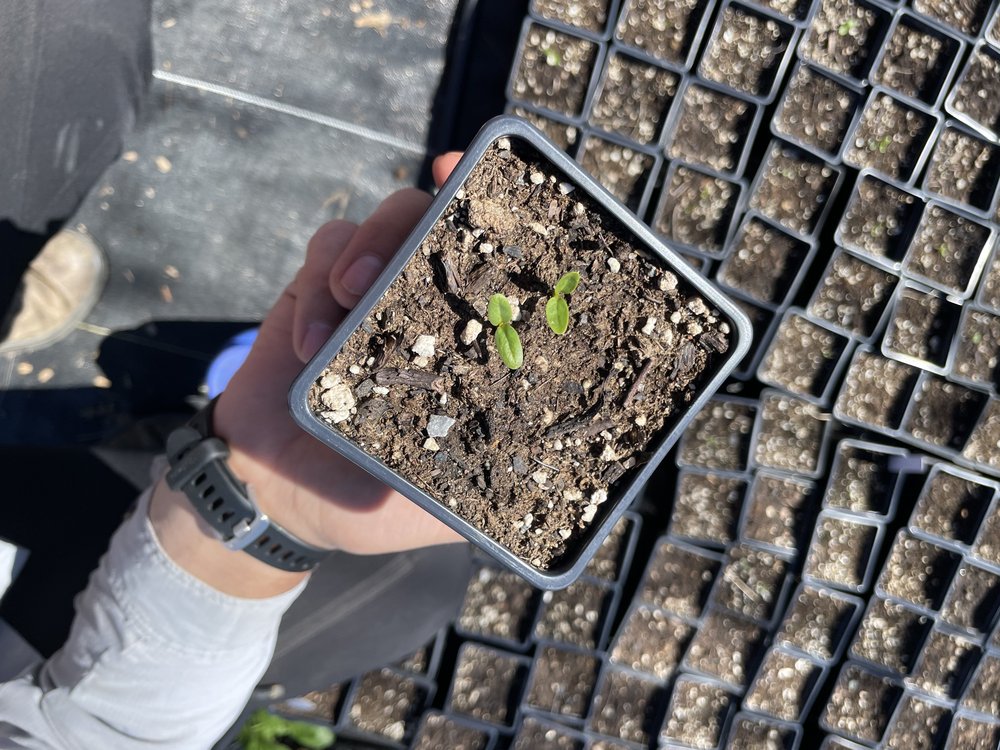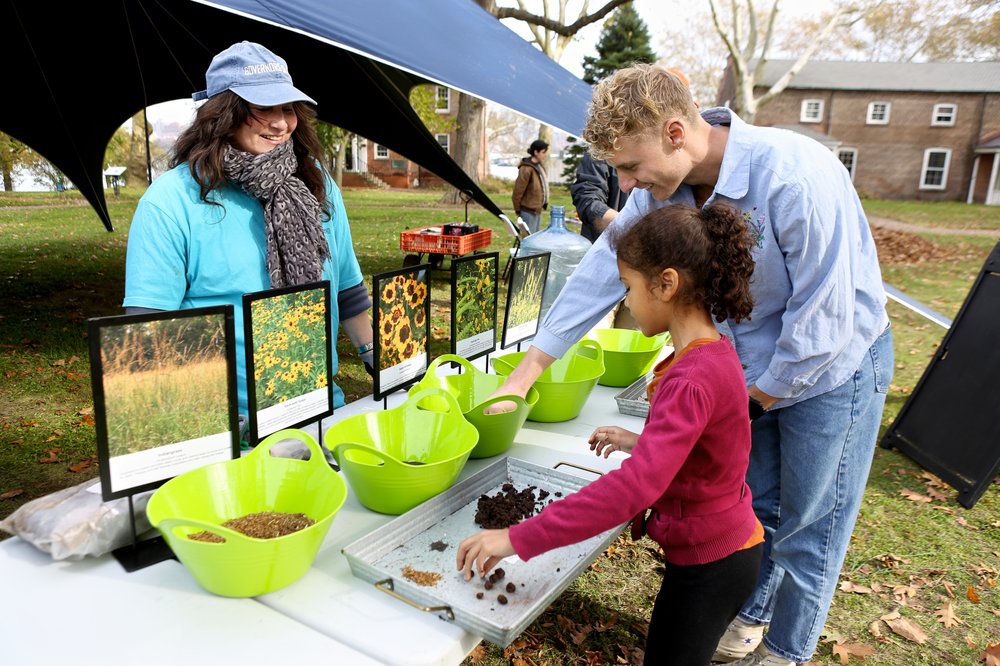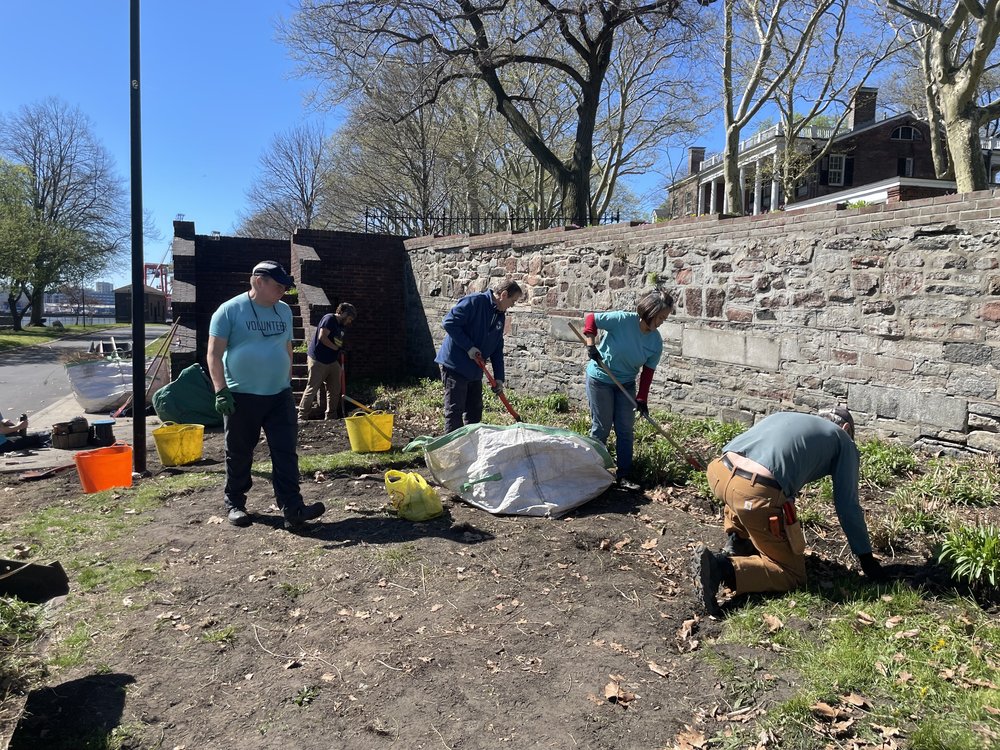NYC gardeners push 'year of the milkweed' to save monarch butterflies from extinction
April 26, 2024, 5:01 a.m.
Development and herbicide have decimated the monarch's main food source, nest and nursery.

The flitting fiery orange and black wings of the monarch butterfly, which once signaled the coming of spring, have become an increasingly rare sight.
The majestic insect's populations on the East Coast dwindled roughly 90% from 1996 to 2013, according to U.S. Fish and Wildlife estimates. Since then, their numbers have declined even further.
But a new effort on Governors Island is a small part of a nationwide effort to help the monarch recover. Gardeners are planting as much milkweed as they can fit on eight sites around the 172-acre island south of Manhattan.
Milkweed, which has pink flowers, is the monarchs’ main food source, nest, and nursery, and conservationists say its steep decline is closely related to dwindling monarch numbers. The new gardens on Governors Island add to more informal, piecemeal efforts by butterfly lovers and small organizations to plant milkweed around the city.
“We can create a green way for wildlife or insects through cities and towns,” said Logan Fisher, horticulture supervisor at Governors Island. “Some people only have a fire escape or a tree pit, but each of those places can still have the promise and potential to support [monarchs].”

The eastern monarch population accounts for more than 90% of all monarch butterflies worldwide. The eastern monarch makes a 4,000-mile round trip from Canada to Mexico each year.
Agriculture and urban development have destroyed the migratory insect’s wintering homes in Mexico and California while pesticides and herbicides have killed off its host plant. Climate change has also played a role with droughts, high temperatures and wildfires causing earlier migrations before milkweed has bloomed.
The U.S. Fish and Wildlife Service is considering whether the monarch should be added to the endangered species list. A decision is expected in September.
Gardeners on Governors Island are calling 2024 “The Year of the Milkweed.” Visitors will be encouraged to plant milkweed in their backyards, window sill gardens and anywhere else they can find.
“We just need to create habitat for them because that is the one thing that we have taken away from them,” Fisher said.
Some New Yorkers have already started planting milkweed around the city, on roadsides and in parks.
“We're doing what you might call guerrilla gardening, where we're planting the milkweed wherever we can get it to grow,” said Keith De Cesare, a co-founder of the Inwood Butterfly Sanctuary. “Right over the hill, there's a little plot where we have a dozen milkweed, over behind the dog run there's a little strip of land where we have some of the milkweed.”
The 300 square foot garden sanctuary hosted a few hundred monarchs in previous springs. Last year, only about five dozen monarchs were seen in the garden – an all-time low.
Milkweed's toxic sap is the cuisine of choice for a monarch, which only lays eggs on one plant before dying. The herbaceous perennial’s milky latex is poisonous to most animals, but is like mother’s milk for caterpillars before they transform. The unpleasant-tasting chemicals consumed from milkweed make caterpillars and butterflies unpalatable to predators.

“Without a question, the most effective [thing to do to bring back monarchs] would be to plant milkweed farms,” said David Grimaldi, entomologist and curator of invertebrate zoology at the American Museum of Natural History.
There are other factors affecting the monarch butterfly's survival. In an effort to save the monarch, some citizen scientists have reared butterflies in their homes and gardens with eggs and cocoons that are available online.
But this can actually do more damage. When monarchs are raised in close quarters, they can develop parasites that kill off the wild populations they come in contact with.
“We don't need to rear them,” Fisher said.
Invasive insects also threaten monarchs, including mantises from China that have become a common sight in gardens. These well-camouflaged insects can get as big as 5 inches, larger than a monarch, whose wingspan can reach up to 4 inches. They consume the monarch’s body and leave behind its wings.
Invasive plants are a problem, too. Mugwort is native to Europe, Asia and Africa. It’s so aggressive that it can overtake and outcompete native species such as milkweed.
Horticulturists on Governors Island said digging up mugwort is half of their job. Another invasive plant called swallow-wort resembles milkweed. But any monarch eggs laid on it will not survive.

“There's a lot of punches coming at the monarch butterfly right now and so the one thing that we can do is create habitat,” Fisher said.
Globally, insects have been declining so rapidly that 40% of species might be extinct in the coming decades.
“This is a problem that's greater than monarchs and milkweed – we're in sort of a global insect apocalypse right now,” said Leo Frampton, a gardener at Governors Island. “We're losing so many insects that we might not even have time to know the numbers. We just know we have to try and help them because insects have been an underrated type of animal historically.”
Organizations including Live Monarch, Monarch Watch and Little Wings will mail milkweed seeds free of charge upon request to any New Yorkers looking to help.
Millions in federal dollars funneled into new Governors Island hybrid-electric ferry